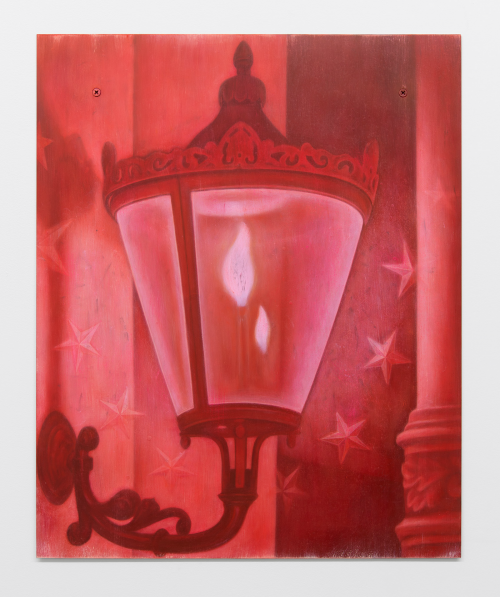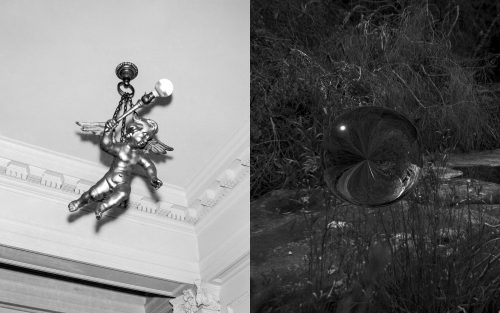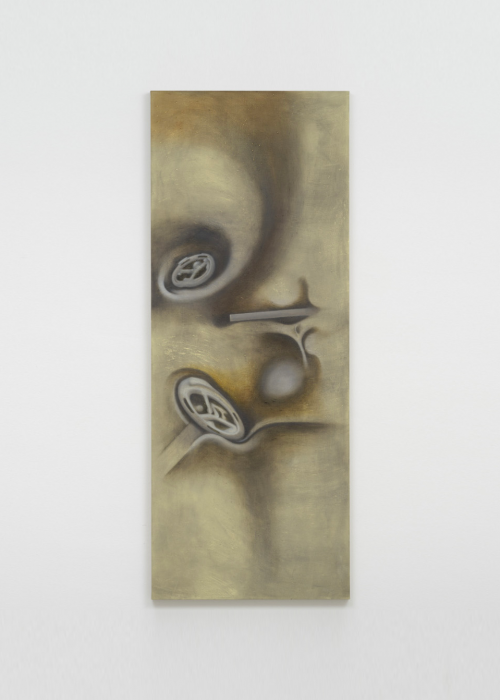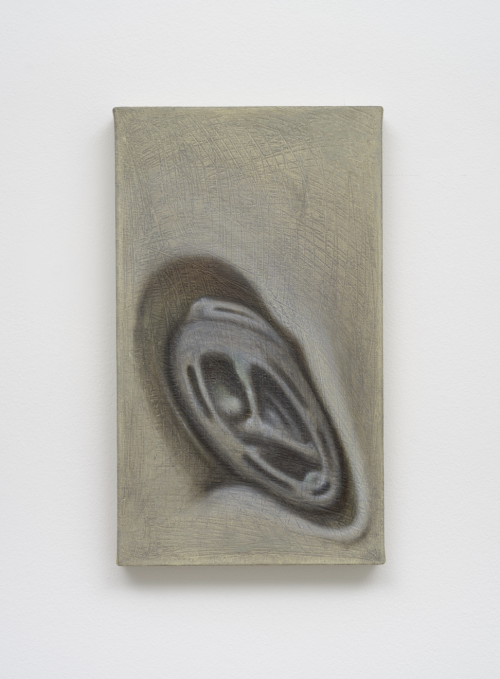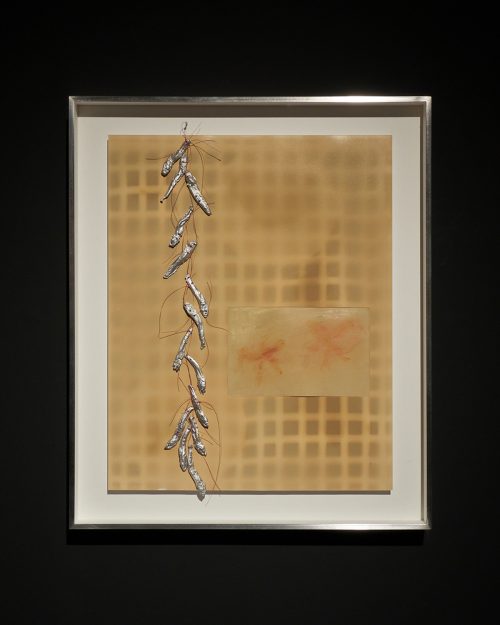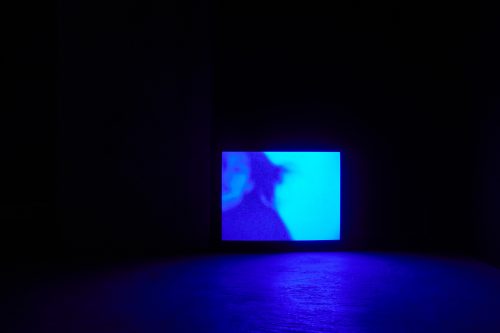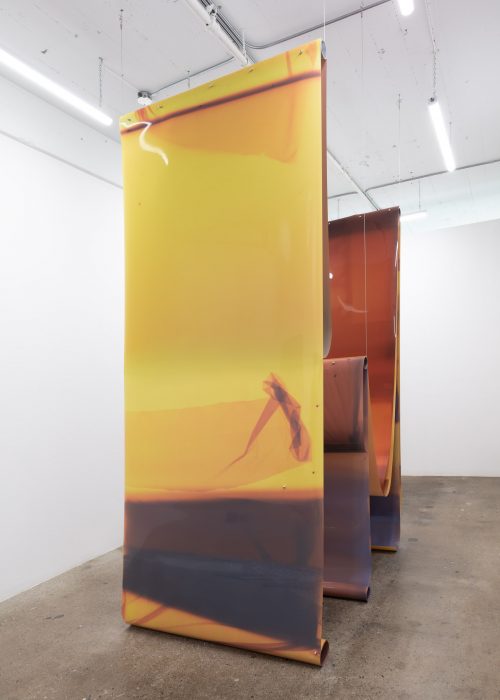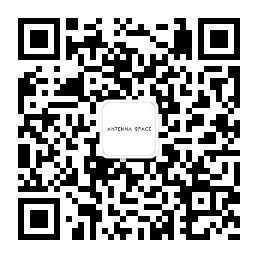.jpg) “Antenna-tenna” is honored to announce the exhibition “And since my love is spent (an image-repertoire)” by curator Eugene Yiu Nam Cheung, featuring artists Lotus L. Kang, Maren Karlson, Sam Lipp, Pan Daijing, and Kai Wasikowski.
“Antenna-tenna” is honored to announce the exhibition “And since my love is spent (an image-repertoire)” by curator Eugene Yiu Nam Cheung, featuring artists Lotus L. Kang, Maren Karlson, Sam Lipp, Pan Daijing, and Kai Wasikowski.
Duration: 2025.1.10 – 2025.2.28
–
words by Eugene Yiu Nam Cheung
In A Lover’s Discourse: Fragments (1977), Roland Barthes frames the experience of romantic love as a script. This script—informed by and constructed through the literary texts that one consumes—manifests as a series of images that govern how an amorous subject makes “real” their experience of infatuation. In love, Barthes argues, these images exist in sharp relief: the beguiled can recall, with fullness and precision, the physical and auratic details of their beloved. As love fades, however, these defined images lose their shimmer, becoming abstractions with a granulated texture, gradually disappearing into a void. Wrote Barthes: “Is the abyss no more than an expedient annihilation?” 1 The script of images that erupts from within the amorous subject forms what Barthes terms the “image-repertoire”—the unilateral language of love—where a beloved exists as the other’s idealization, unable to speak back to the images which constitute their construction. Of himself as the amorous subject, Barthes writes: “Born of literature, able to speak only with the help of its worn codes, [I] am alone with my strength, doomed to my own philosophy.”2
The Apparition (1633) is a poem written by the metaphysical poet John Donne. In it, the speaker is a scorned man who vows to haunt the woman whose rejection has the effect of ‘killing’ him. This woman, armed with her unwillingness to sate her harasser, is charged by him as a ‘murderer’—an old cliché of Renaissance poetry. Here, the male speaker (though not yet killed) becomes a specter to exact revenge: His haunting will cause the woman to know no peace in sleep; her body “Bath’d in a cold quicksilver sweat”; her face more ghostly than his own. He seeks to imprison her within his own torment. The poem concludes with the exhausted and ‘love-spent’ speaker making one final plea for her to yield, so that she might shed her designation as a ‘murderer’ and maintain innocence: “… and since my love is spent / I’had rather thou shouldst painfully repent, / Than by my threat’nings rest still innocent.” These lines are striking not so much for their reiteration of the speaker’s androcentric threat, but that they perhaps denote the point at which he recognizes his image-repertoire as being in the process of transformation. In other words, a reader might question his libidinal shift from love (albeit “spent”) to vengeance and back to love, asking, how might this script of images ricochet or never resolve?
This exhibition functions as an imaginative exercise with two, interrelated points of entry. Firstly, it attempts to construct and spatialize the affective intensity of the image-repertoire that Donne’s speaker in The Apparition experiences. While the works in this exhibition form an image-repertoire that hopes to echo the visceral force of Donne’s 17th century speaker, it departs from his androcentrism to draw a larger poetic and thematic arc that captures the points at which love shifts to vengeance within the context of material history. Secondly, in his earlier essay “Leaving the Movie Theater” (1975), Barthes suggests that an understanding of a society’s image-repertoire is also an understanding of the subject positions that can manifest within that society.3 If this exhibition represents the image-repertoire of a modern, vengeful subject, to what ideological stakes are they loyal? Put differently, this exhibition asks: What can the experience of falling out of love and into vengeance tell us about one’s material investment in the world?
1. Roland Barthes, A Lover’s Discourse: Fragments, trans. Richard Howard (New York: Hill & Wang, 1978), 12.
2. Ibid, 23.
3. Roland Barthes, “Leaving the Movie Theater” in The Rustle of Language (Berkeley and Los Angeles: University of California Press, 1989).
–
About the Curator
Eugene Yiu Nam Cheung is a writer, cultural worker, and founding editor of Decolonial Hacker. He is particularly interested in anarchist and dissident publication practices, utopian thresholds in language, and literary expressions of the revolutionary consciousness. In 2023, Eugene was the Asymmetry Curatorial Fellow at Whitechapel Gallery, London, where he curated the exhibition Anna Mendelssohn: Speak, Poetess. Eugene has been a curator-in-residence at Delfina Foundation, and was previously part of the curatorial and public program teams at the Julia Stoschek Foundation and documenta fifteen, respectively. His writing has appeared in places such as e-flux Criticism, Third Text, ArtReview, Griffith Review, Art+Australia, and more. In 2021, he won the International Award for Art Criticism (IAAC). Eugene currently teaches critical theory and curatorial practice at Design Academy Eindhoven.
–
Video Walkthrough
–
Antenna-Tenna
B1-7, 9 Qufu Road, Jing’an, Shanghai
Wednesday to Saturday 11:00-18:30
.jpg) “Antenna-tenna” is honored to announce the exhibition “And since my love is spent (an image-repertoire)” by curator Eugene Yiu Nam Cheung, featuring artists Lotus L. Kang, Maren Karlson, Sam Lipp, Pan Daijing, and Kai Wasikowski.
“Antenna-tenna” is honored to announce the exhibition “And since my love is spent (an image-repertoire)” by curator Eugene Yiu Nam Cheung, featuring artists Lotus L. Kang, Maren Karlson, Sam Lipp, Pan Daijing, and Kai Wasikowski.